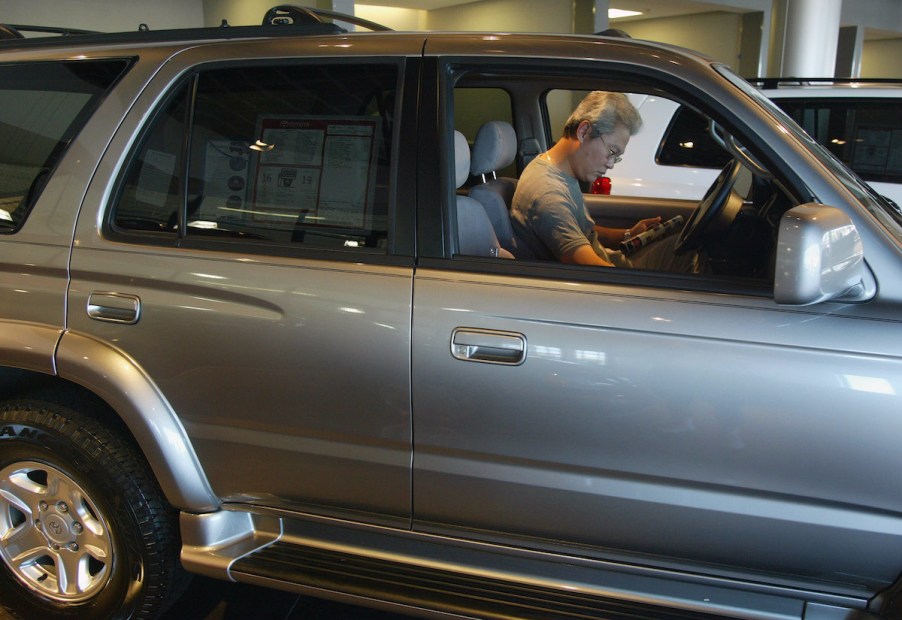
Why a Third-Generation Toyota 4Runner Is the Best for Off-Roading
Ah, the joy of going off-roading. No Facebook updates, no annoying phone calls, and mud. Who doesn’t love mud? The problem is finding the perfect SUV to go off-roading in. Should you buy something new? What about an old SUV? And which model should you get? If going off-road is a way of life for you, Autotrader has the perfect SUV to make all your dreams come true.
Old really is better
It’s easy to get caught up in buying new. After all, newer is better. You get the latest tech, a warranty on your vehicle, and that pleasantly fresh new car smell.
That’s not such a great thing if you want a vehicle to go off-roading in, however. If you’re tearing over deserts, clambering over boulders, and crashing across rivers, your vehicle is going to take a beating. That’s why going old school isn’t such a bad thing.
If your used SUV gets banged up, it hurts a lot less than a new one. It might not be as attractive going down the highway, but other off-roaders will see that beat up body as a sign that you’re the real deal. The major problem is finding a used SUV that won’t break down while you’re a hundred miles from civilization, and that’s where the third generation of Toyota 4Runner comes in.
The third-generation 4Runner has it all
The third generation of Toyota 4Runner ran from 1996-2002. This generation gives you many model years to pick from if you’re interested in checking one out. It’s also considered the best generation for a used 4Runner to go off-roading in.
It has two options for engines. One is a 150 hp 2.7-liter 4-cylinder engine, and the other is a 183-hp 3.4-liter V6. While there are more powerful engines on the market today, these two are more than adequate for hitting the back trails.
This generation of 4Runner drives more like a truck than your typical SUV, but that shouldn’t be a problem for most off-roaders. Other features that help off-roaders include electronic stability control and A-TRAC active traction assist.
Toyota added some safety features such as dual airbags and reinforced doors. If you’re judging this by today’s standards, these features are commonplace no one even asks about them. During that generation, however, they were a significant improvement over the second generation.
There’s a slight catch
No vehicle is perfect, and the third generation of the Toyota 4Runner is no exception. The fuel economy is not that great. It only gets up to 17 city / 19 highway. If this vehicle is doubling as a daily driver, you might want to go with something else.
It also doesn’t have a smooth ride. Most off-roaders don’t care, but many people regret buying a vehicle that feels like your on a bucking bronco going down the highway. If that’s you, again, go for something more like a used Mercedes G-Wagon. The Toyota 4Runner isn’t as bad as a Jeep Wrangler, but it isn’t designed for highway driving.
Another point to beware of is the fact that used 4Runners can be on the expensive side. They’re known for their reliability and don’t break down easily at higher mileage, which drives the price up. According to Autotrader, “A look at the Autotrader.com classified shows prices can range from a low of around $3,000 for a 1999 Limited with over 250,000 miles to a high of around $8,000 for a 2002 4Runner Limited with around 140,000 miles.”
Overall, 4Runners are still considered perfect for off-roaders. It may not be without its flaws, but the good far outweighs the bad.


